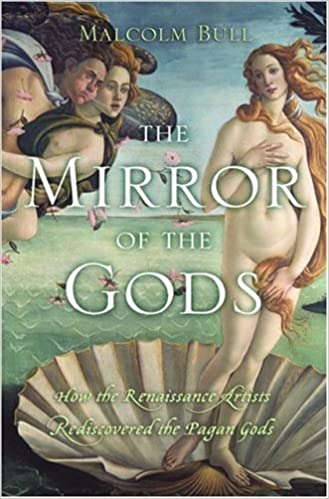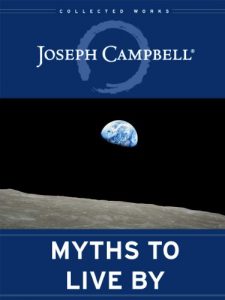Dreams, Images of the Feminine, and the Venus of Laussel: What Paleolithic Venuses Tells Us Today

This month’s MythBlast Series highlighted text is Joseph Campbell’s Myths To Live By. I leafed through my copy in Portuguese and nothing struck me. I like to think about things that make me curious to know more, and apparently there were no triggers there. Therefore, I decided to dive into the English edition, which is richly illustrated. And right away an image from Chapter II, The Emergence of Mankind, took my breath away. There it was, emerging from limestone, a Venus that I had not yet been introduced to: the Venus of Laussel.
My mind was filled with images of other elder figurines I already knew. I confess that, whenever I travel, if I know there are any of these Paleolithic ladies nearby, I make certain to pay my respects. This was the case with the Venus of Willendorf, my favorite, at the Natural History Museum in Vienna (Naturhistorisches Museum). Twice I’ve been mesmerized for hours in front of that tiny 11.1 cm figurine. More recently, in 2020, I paid tribute to the charming Dame à la Capuche or Vénus de Brassempouy, a 3.65 cm miniature in the shape of a female bust, carved in mammoth ivory, with the delicate and precise representation of hair or a cap. It is housed in the Musée des Antiquités Nationales, also known as the Musée d’Archéologie Nationale, one of the main French archeology museums located at the Château de Saint-Germain-en-Laye in the department of Yvelines, about 19 km west of Paris. On the same occasion, I visited the space where another Paleolithic celebrity is located, the Venus of Lespugue, a 14.7 cm ivory figurine that is in the Musée de l’Homme, in Paris. It was not on display at the time, due to repairs being made to the building next door. The grand old lady was too precious to risk suffering any microfractures due to eventual building shakes.
And to my delight, in the original edition of Campbell’s book, there was the Venus of Laussel, also known as “woman with a horn”. I immediately tried to find out more about her. It was discovered in 1909 by Dr. Lalanne, in the so-called “Grand Abri,” located at the archaeological site of Laussel in the town of Marquay, in the French Dordogne. It is currently housed in the Musée d’Aquitaine in Bordeaux, the center of a famous wine region in southwest France.
Read more
 Dr. Lalanne described it as a 46 cm figurine carved from a block of hard limestone, depicting a naked woman with a bison horn in her right hand. The head, like dolls in the anthroposophy tradition, has no traces of a face – a common link between the Venuses in general. Shaped in profile, it has an elongated and elegant neck. From the chest sprout two long breasts, oval and heavy. Dr. Lalanne defined her belly as something pronounced but well proportioned. The right arm falls naturally along the torso, with the hand finely detailed. Except for the head, the whole body is polished.
Dr. Lalanne described it as a 46 cm figurine carved from a block of hard limestone, depicting a naked woman with a bison horn in her right hand. The head, like dolls in the anthroposophy tradition, has no traces of a face – a common link between the Venuses in general. Shaped in profile, it has an elongated and elegant neck. From the chest sprout two long breasts, oval and heavy. Dr. Lalanne defined her belly as something pronounced but well proportioned. The right arm falls naturally along the torso, with the hand finely detailed. Except for the head, the whole body is polished.
A naked woman… While reading Campbell’s book I suddenly realized that on the previous night I had a dream in which a woman would participate in a female ritual with Indian women. She was unclothed, which seemed natural in such a ritual, but the Indian women were not totally devoid of clothes, since they had their loincloths and headdresses. Feeling exposed, the woman sought to return to a known shelter in search of something to cover her nudity. In the dream, the woman was ashamed and looking to cover her naked body like Eve in the Bible. I freely associated it with the all too many concerns women have these days, immersed as most are in a competitive world of unprecedented speed due to technologies, a world of work, still with its glass ceilings. And not least, to the current world political situation with its turn to the radical right, and the consequences for women in such positions. In other words, I was thinking about the contemporary social powers that are affecting women in general.
But Campbell highlighted another aspect related to the Venus of Laussel, with its estimated age of 20,000 years: The female natural powers.
And it seems to me important to remark that, whereas when masculine figures appear in the wall paintings of the same period they are always clothed in some sort of costume, these female figurines are absolutely naked, simply standing, unadorned. This says something about the psychological and consequently mythical values of, respectively, the male and the female presences. (xx)
Standing unadorned this way, the naked woman of the dream was in her proper state. Would she remain so in the current times? In my point of view, this issue of identification with feminine and masculine might be often misunderstood in Campbell, due to the spirit of the times he lived in. Accordingly, it’s important to understand well his perspective:
The Woman is immediately mythic in herself and is experienced as such, not only as the source and giver of life, but also in the magic of her touch and presence. The accord of her seasons with the cycles of the moon is a matter of mystery too. Whereas the male, costumed, is one who has gained his powers and represents some specific, limited, social role or function. (36)
Motivated by Campbell’s ideas, I rethought the dream. Was the dream an unconscious suggestion that female natural powers should integrate sociocultural powers to help us cope with the huge contemporary dangers we are experiencing, such as the threat to the environment? I continued reading the passage where Campbell addressed the subject:
In infancy—as both Freud and Jung have pointed out—the mother is experienced as a power of nature and the father as the authority of society. The mother has brought forth the child, provides it with nourishment, and in the infant’s imagination may appear (like the witch of Hansel and Gretel) as a consuming mother, threatening to swallow her product back. The father is, then, the initiator, not only inducting the boy into his social role, but also, as a representing to his daughter her first and foremost experience of the character of the male, awakening her to her social role as female to male. (xx)
This dichotomy between the representations of the feminine and the masculine appears, according to Campbell, in the space where the figurines are found:
The paleolithic Venuses have been found in the precincts always of domestic hearths, while the figures of the costumed males, on the other hand, appear in the deep, dark interiors of the painted temple-caves, among the wonderfully pictured animal herds. They resemble in their dress and attitudes, furthermore, the shamans of our later primitive tribes, and were undoubtedly associated with rituals of the hunt and of initiation. (xx)
I turned back to the dream again. I was sure it was not about returning to the past. The synergy between the two powers would probably be a better conceptualization. Perhaps the oneiric suggestion was for women to be unafraid to bare themselves in order to reconnect with the larger mythical cycles of this ancestral female knowledge. However, they should consider using some of the social clothing related to the masculine principle in order to handle the two powers in the best way possible.
I kept looking at the Venus of Laussel’s image, and my thoughts turned to the psychiatrist Carl Gustav Jung, whose work Campbell was very familiar with, and with whom he had visited in Switzerland. In Psychologie und Alchemie, Jung defines the horn as a sign of power and strength just as Campbell does. However, Jung goes further, stating that a horn is as much a symbol of the masculine in its power to penetrate as of the feminine, in its capacity as a receptacle or a cup. Therefore, for Jung, it is a unifying symbol, which expresses the bipolarity of the archetype (Jung, 1972, §553).
The final card of the tarot, The World, where the representations of male and female are together in harmony in the same body, came to my mind. Maybe the Venus of Laussel, looking at the horn, is a symbol of the new human psychology, with no divisions of sex, gender or anything of the kind. She might be the symbol for the new mythology of human beings to come, that we—or eventually our children, grandchildren, or people we are one with, will be honoring.
Next December, if everything goes well, I will head to my first conference abroad since the pandemic began in 2020. Synchronously, it will be in Bordeaux, France. And now, thanks to Campbell, I will plan to pay my respects to the lady of Laussel. By holding the horn absolutely naked, simply standing, unadorned, she might be the perfect representation of the coniunctio, the sacred marriage of the inner principles of masculine and feminine, and therefore help us guide ourselves and others in this troubled times.
 Monica Martinez is the former Joseph Campbell Foundation Mythological RoundTable® Program South American Coordinator. She is a trained Jungian Psychoanalyst with a private practice in Brazil. On the academic field, she is full professor on the Communication and Culture Graduate Programme at the University of Sorocaba, Brazil, and visiting professor at the École des Hautes Études en Sciences de l'Information et de la Communication (Celsa) of the Sorbonne Université (France). She holds a PhD in Sciences of Communication (University of São Paulo) and completed her postdoctoral studies at the Methodist University of São Paulo. She has been interested in mythology since the first book of Greek mythology she ordered from a catalog when she was 9 years old.
Monica Martinez is the former Joseph Campbell Foundation Mythological RoundTable® Program South American Coordinator. She is a trained Jungian Psychoanalyst with a private practice in Brazil. On the academic field, she is full professor on the Communication and Culture Graduate Programme at the University of Sorocaba, Brazil, and visiting professor at the École des Hautes Études en Sciences de l'Information et de la Communication (Celsa) of the Sorbonne Université (France). She holds a PhD in Sciences of Communication (University of São Paulo) and completed her postdoctoral studies at the Methodist University of São Paulo. She has been interested in mythology since the first book of Greek mythology she ordered from a catalog when she was 9 years old. Monthly Gift
Earthrise from Thou Art That (Esingle)
Our gift to you this month is eSingle. Access this download for free until the end of the month.
This extract from Thou Art That, the first title in the publishing partnership between Joseph Campbell Foundation and New World Library, remains one of the most inspiring, delightful pieces we have published together. “Earthrise” serves as an epilogue to the main text, a fascinating exploration and summing up of themes. It was originally published in The New York Times Magazine. The 1979 dialogue between Campbell and Kennedy (himself a distinguished theologian) sparkles with the same insight and wit as the book that Kennedy would edit together in 2001 from Campbell’s unpublished writings, lecture notes, and transcripts on the subject of transforming religious metaphor in the Abrahamic religions.
Weekly Quote
From the Pyrenees to Lake Baikal, the evidence now is before us of a Late Stone Age mythology in which the outstanding figure was the Naked Goddess. And she can already be recognized in a number of her better-known later roles: as Lady of the Wild Things, Protectress of the Hearth, Consort of the Moon-bull, who dies to be resurrected––with herself thereby a personification of the mystery of the moon, which has the power to shed its shadow (as the serpent sloughs its skin) to appear reborn. Not a few of her images suggest pregnancy: she was almost certainly a patroness of childbirth and fecundity.
Featured Video
Myth Resources
The Mirror of the Gods: How the Renaissance Artists Rediscovered the Pagan Gods
 By the end of the 15th century, the remains of the ancient gods littered the landscape of Western Europe. Christianity had erased the religions of ancient Greece and Rome and most Europeans believed the destruction of classical art was God’s judgment on the pagan deities. How, then, did European artists during the next three centuries create such monumental works as Botticelli’s The Birth of Venus and Raphael’s Parnassus?
By the end of the 15th century, the remains of the ancient gods littered the landscape of Western Europe. Christianity had erased the religions of ancient Greece and Rome and most Europeans believed the destruction of classical art was God’s judgment on the pagan deities. How, then, did European artists during the next three centuries create such monumental works as Botticelli’s The Birth of Venus and Raphael’s Parnassus?
In The Mirror of the Gods, Malcolm Bull tells the revolutionary story of how the great artists of Western Europe–from Botticelli and Leonardo to Titian and Rubens–revived the gods of ancient Greece and Rome. Each chapter focuses on a different deity and sheds dazzling new light on such familiar figures as Venus, Hercules, and Bacchus. Bull draws on hundreds of illustrations to illuminate the ancient myths through the eyes of Renaissance and Baroque artists, not as they appear in classical literature. When the wealthy and powerful princes of Christian Europe began to identify with the pagan gods, myth became the artist’s medium for telling the story of his own time. The Mirror of the Gods is the fascinating and extraordinary story of how Renaissance artists combined mythological imagery and artistic virtuosity to change the course of western art.
The Mirror of the Gods profoundly deepens our understanding of some of the greatest and most subversive artwork in European history. This delightfully told, lavishly illustrated, and extraordinary book amply rewards our ongoing fascination with classical myth and Renaissance art.
Featured Work
Myths to Live By
In Myths to Live By, Joseph, Campbell explores the enduring power of the universal myths that influence our lives daily and examines the myth-making process from the primitive past to the immediate present, returning always to the source from which all mythology springs; the creative imagination.
Book Club
“Authors of new books rooted in mythology are asking fascinating questions of classic stories and providing provocative answers. Jennifer Saint’s glittering retelling of the classic tale Elektra is a brilliant example.
She showcases forgotten women of Greek mythology, ties that bind them to one another, and betrayals that threaten to sever those ties forever. With alternating chapters from their perspectives, Saint gives us a front row seat to their psyches as they grapple with a family legacy entangled with an ancient curse.
Vivid and evocative descriptions from page one carry us away into their tale of rebellion, revenge, and redemption where no one escapes unscathed and everyone is utterly transformed.”
Christa Avampato
Editorial Advisory Group
Joseph Campbell Foundation
Subscribe to JCF’s email list to receive a weekly MythBlast newsletter along with occasional news and special offers from JCF.






